Ten Brightest Stars in the Sky
Do you know them all, as well as the reasons for their brightness?
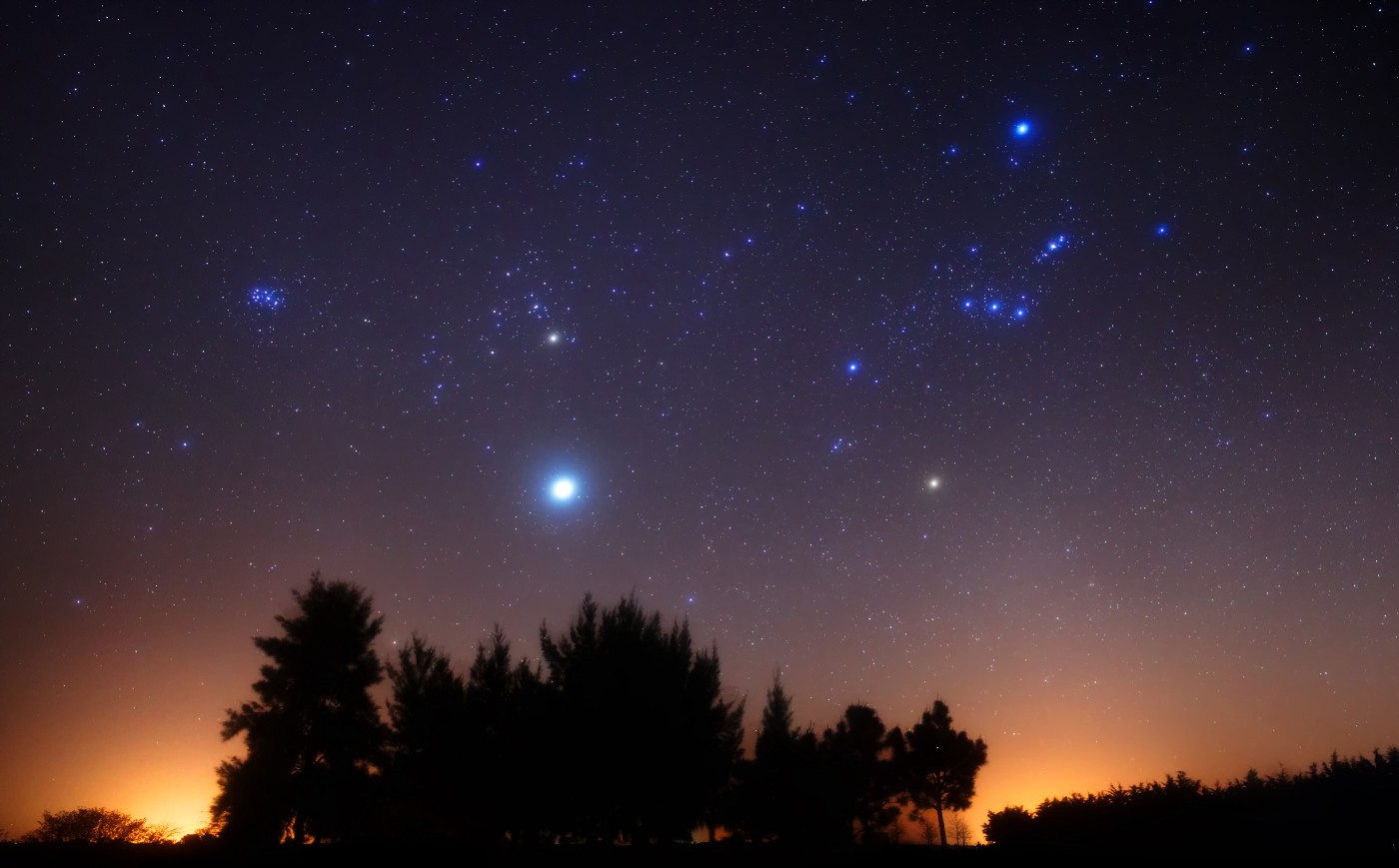
I'm hungry for new knowledge. The point is to learn every day and become brighter and brighter. That is the essence of this world.
- jay-z
When you imagine the night sky, you most likely think of thousands of stars flickering on a black nightcover, something that you can really see only far from cities and other sources of light pollution.
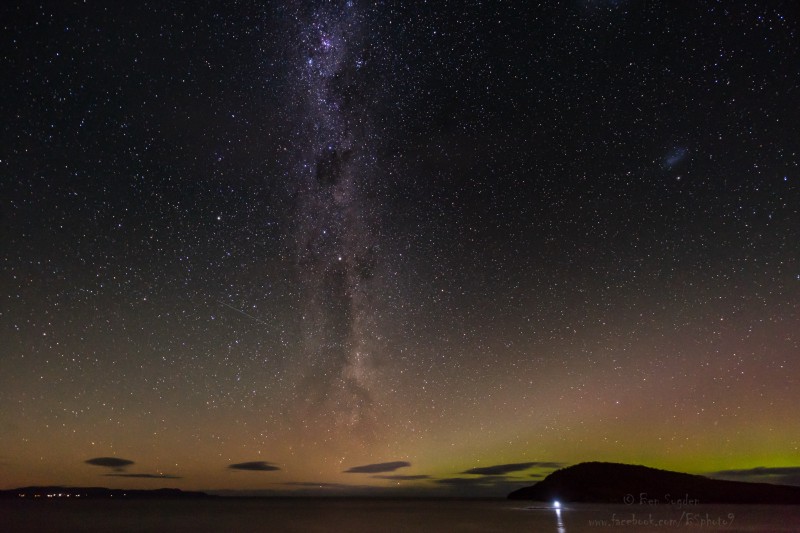
But those of us who cannot periodically observe such a spectacle miss the fact that the stars seen from urban areas with high light pollution look different than when viewed in dark conditions. Their color and relative brightness immediately separate them from their neighboring stars, and each of them has its own story.

')
The inhabitants of the northern hemisphere are likely to immediately recognize the Big Dipper or the letter W in Cassiopaea, and in the southern hemisphere the most famous constellation should be the Southern Cross. But these stars do not belong to the top ten brightest!

Milky Way near the Southern Cross
Each star has its own life cycle, to which it is attached from the moment of birth. When forming any star, the dominant element will be hydrogen - the most common element in the Universe - and its fate is determined only by its mass. Stars weighing 8% of the sun can ignite a nuclear fusion reaction in the nucleus, synthesizing helium from hydrogen, and their energy gradually moves from the inside to the outside and pours into the Universe. Stars of low mass are red (due to low temperatures), dim, and burn their fuel slowly - the longest-lived destined to burn trillions of years.

But the more a star gains mass, the hotter its core is, and the larger the region in which nuclear fusion goes. By the time the solar mass is reached, the star falls into class G, and its lifetime does not exceed ten billion years. Double the solar mass, and you get a class A star, bright blue, and living less than two billion years. And the most massive stars, classes O and B, live only a few million years, after which they run out of hydrogen fuel in the core. Not surprisingly, the most massive and hottest stars are also the brightest. A typical class A star may be 20 times brighter than the Sun, and the most massive - tens of thousands of times!
But no matter how the star starts life, the hydrogen fuel in its core ends.
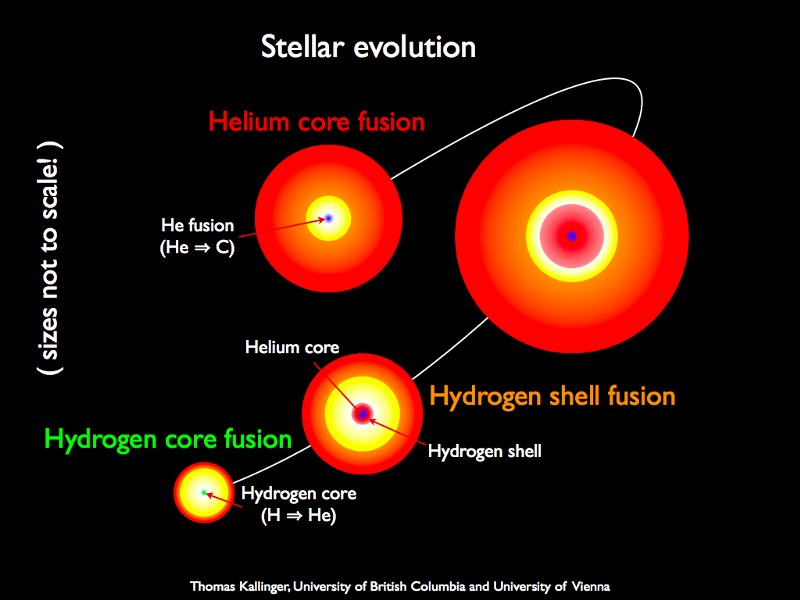
And from this moment the star begins to burn heavier elements, expanding into a giant star, colder, but also brighter than the original. The giant's phase is shorter than the hydrogen burning phase, but its incredible brightness makes it visible from much greater distances than those from which the original star was visible.
Taking into account all this, we move on to the top ten brightest stars in our sky, in order of increasing brightness.

10. Achernar . A bright blue star, seven times larger than that of the Sun, and 3000 times as bright. This is one of the fastest spinning stars known to us! It rotates so fast that its equatorial radius is 56% more polar, and the temperature at the pole - because it is much closer to the core - is 10,000 K more. But it is quite far from us, in 139 light years.
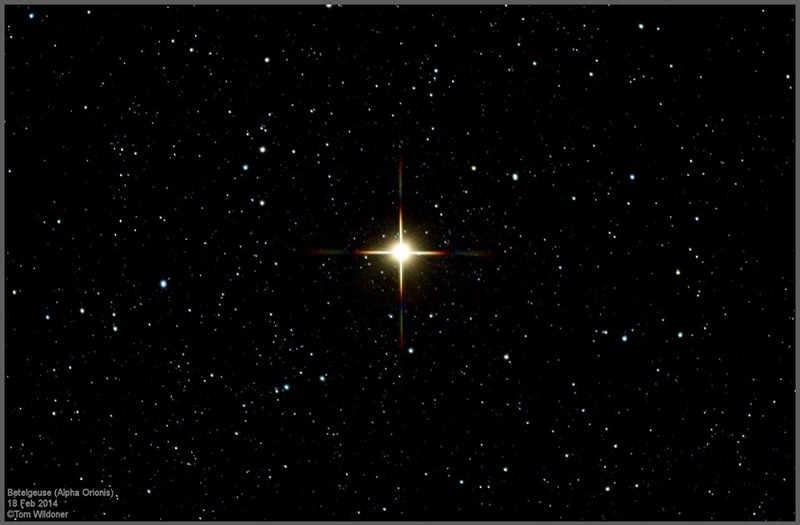
9. Betelgeuse . Red giant from the constellation of Orion, Betelgeuse was a bright and hot star of class O, until she ran out of hydrogen and she switched to helium. Despite the low temperature of 3500 K, it is more than 100,000 times brighter than the Sun, which is why it is among the ten brightest, even though it is 600 light-years. In the next million years, Betelgeuse will turn into a supernova, and will temporarily become the brightest star in the sky, possibly visible and day.

8. Procyon . The star is very different from the ones we reviewed. Procyon is a modest F-class star, only 40% larger than the Sun, and is on the verge of exhausting hydrogen in the core - that is, it is a subgiant in the process of evolution. It is about 7 times brighter than the Sun, but is only 11.5 light years away, so it can be brighter than almost all but seven stars in our sky.
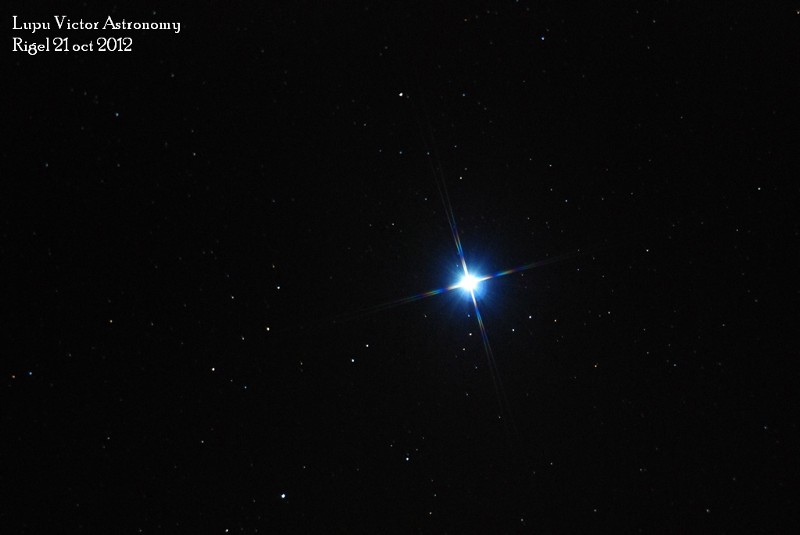
7. Rigel . In Orion, Betelgeuse is not the brightest of the stars - this distinction is awarded to Riegel, the star even more distant from us. It is located at 860 light years, and at a temperature of only 12,000 degrees, Riegel does not belong to the main sequence stars - this is a rare blue supergiant! It is 120,000 times brighter than the Sun, and shines so brightly not because of the distance from us, but because of its own brightness.
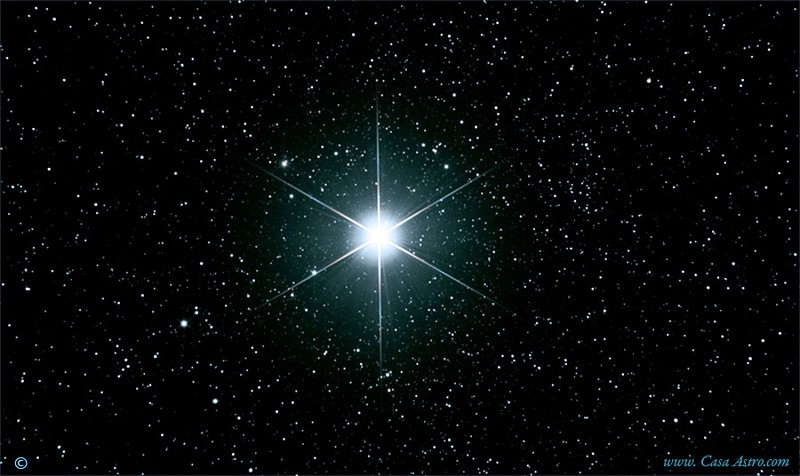
6. Chapel . This is a strange star, because, in fact, these are two red giants with a temperature comparable to that of the sun, but at the same time each of them is about 78 times brighter than the sun. At a distance of 42 light years, it is the combination of its own brightness, a relatively short distance, and the fact that there are two of them, allowing the Chapel to be on our list.
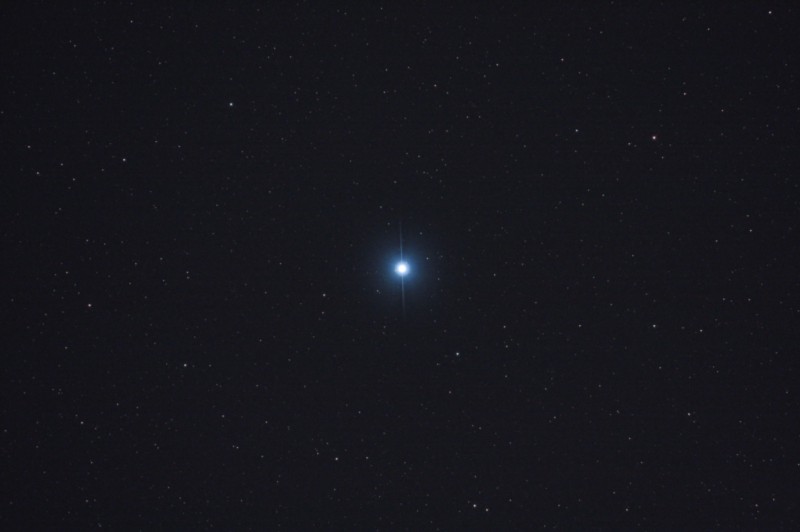
5. Vega . The brightest star from the Summer-Autumn Triangle, the alien house from the movie “Contact”. Astronomers have used it as a standard “zero magnitude” star. It is only 25 light years away, belongs to the main sequence stars, and one of the brightest class A stars known to us, as well as a rather young one, aged only 400-500 Ma. At the same time it is 40 times brighter than the Sun, and the fifth brightest star in the sky. And of all the stars in the northern hemisphere, Vega is second only to one star ...

4. Arcturus . The orange giant, on the evolutionary scale, lies somewhere between Procyon and Capella. This is the brightest star of the northern hemisphere, and it is easy to find on the handle of the Big Dipper. It is 170 times brighter than the sun, and, following the evolutionary path, can become even brighter! She is only 37 light-years away from us, and only three stars are brighter than her, all located in the southern hemisphere.
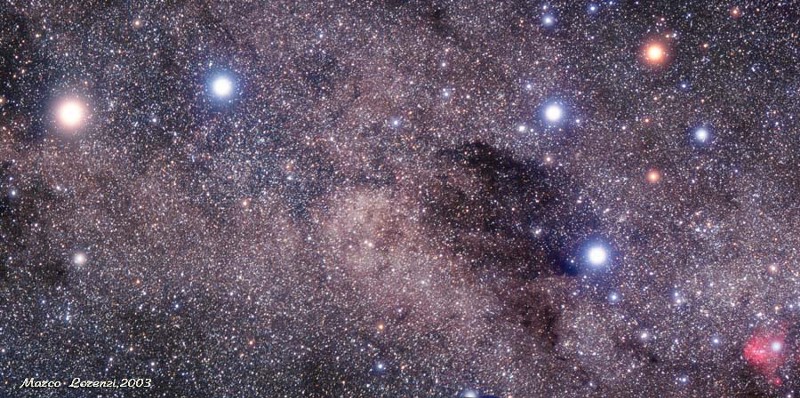
3. Alpha Centauri . This is a triple system, in which the main term is very similar to the Sun, and in itself is dimmer than any star out of ten. But the Alpha Centauri system consists of the stars closest to us, so its location affects its apparent brightness - after all, it is only 4.4 light years away. Not at all what # 2 is on the list.

2. Canopus . White supergiant, Canopus is 15,000 times as bright as the Sun, and this is the second of the brightest stars in the night sky, despite the distance of 310 light years from us. It is ten times more massive than the Sun and 71 times more - it is not surprising that it shines so brightly, but it could not reach the first place. After all, the brightest star in the sky is ...

1. Sirius . It is twice as bright as Canopus, and observers from the northern hemisphere can often see it in the winter, ascending beyond the constellation Orion. It often flickers, as its bright light can penetrate through the lower layers of the atmosphere better than the light of other stars. It is only 8.6 light years away from us, but it is a class A star, twice as massive and 25 times brighter than the Sun.
You may be surprised that the first on the list are not the brightest and not the closest stars, but rather combinations of sufficient brightness and a sufficiently small distance to shine brighter than anyone. The stars are located two times farther, the brightness is four times less, so Sirius shines brighter than Canopus, which shines brighter than Alpha Centauri, etc. Interestingly, the dwarf stars of class M, to which three out of every four stars of the Universe belong, are not on this list at all.
What can be learned from this lesson: sometimes things that seem to us the most prominent and most obvious are the most unusual. Common things can be much more difficult to find, but this means that we should improve our methods of observation!
Source: https://habr.com/ru/post/399683/
All Articles